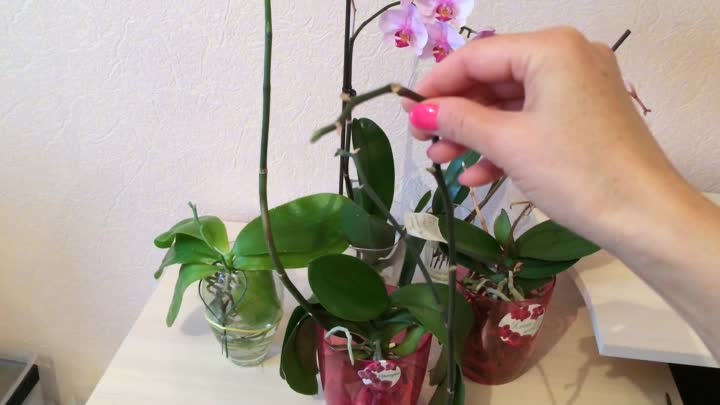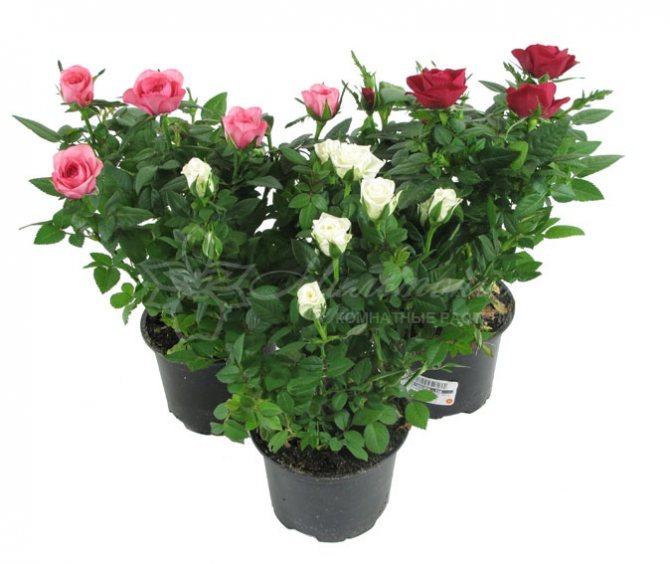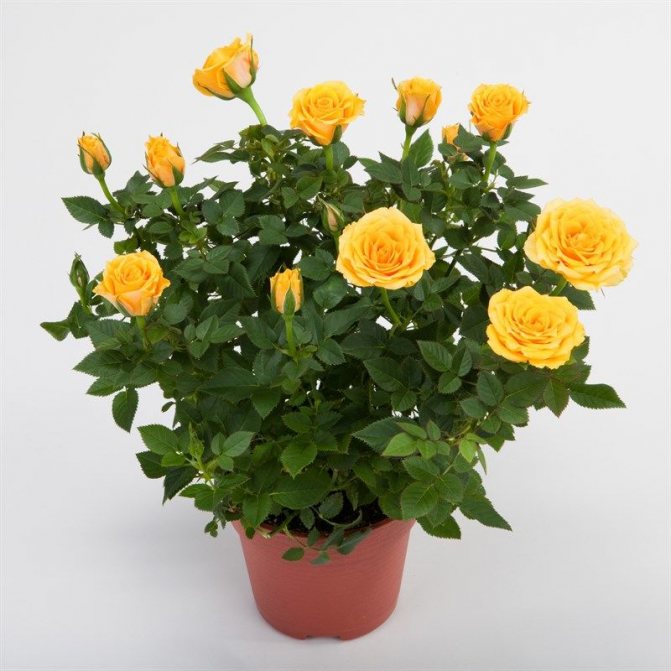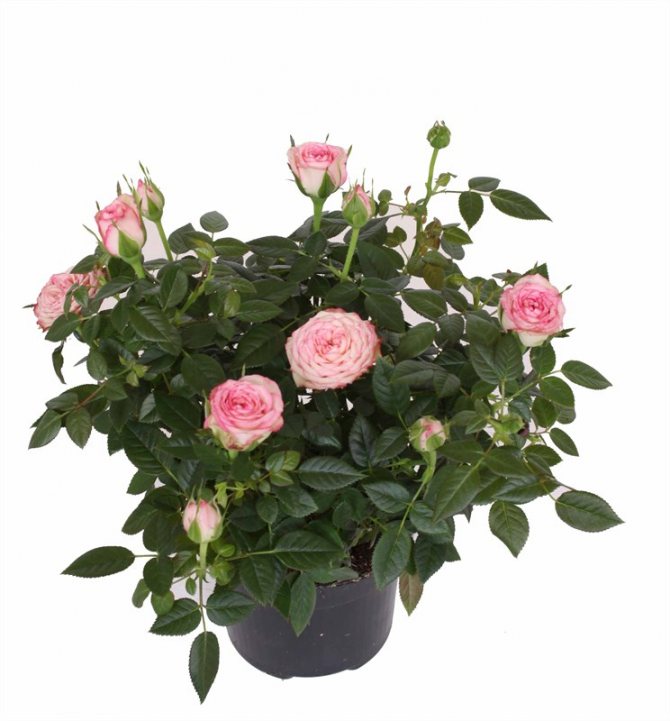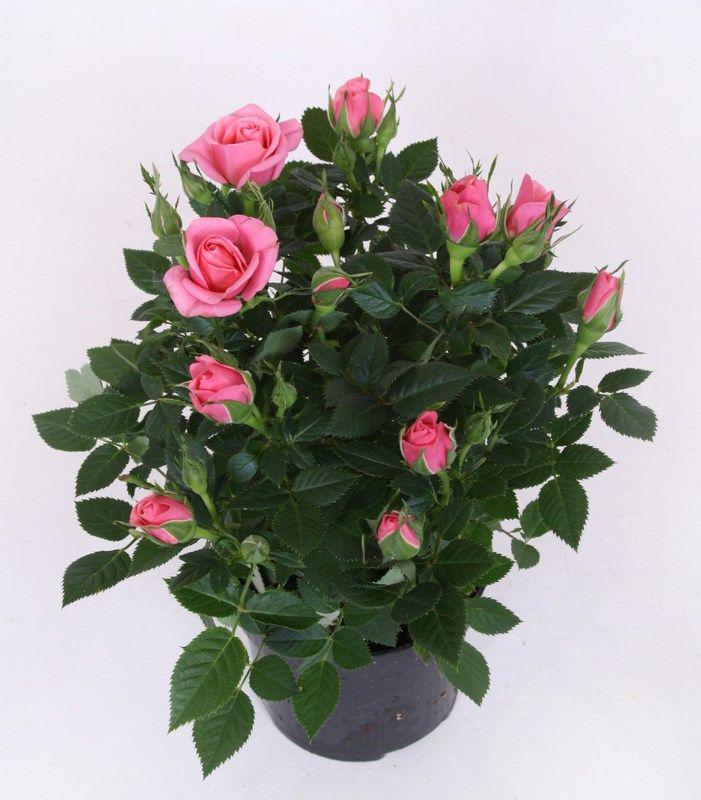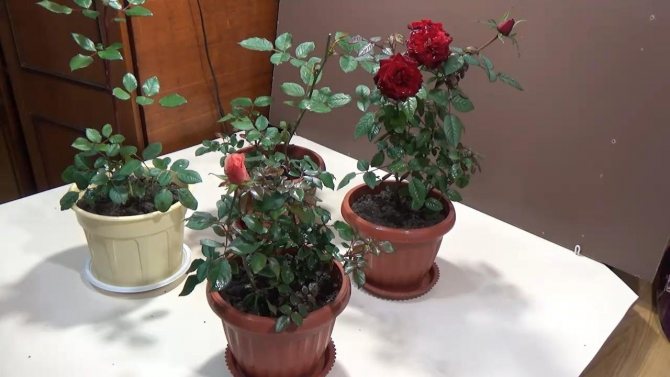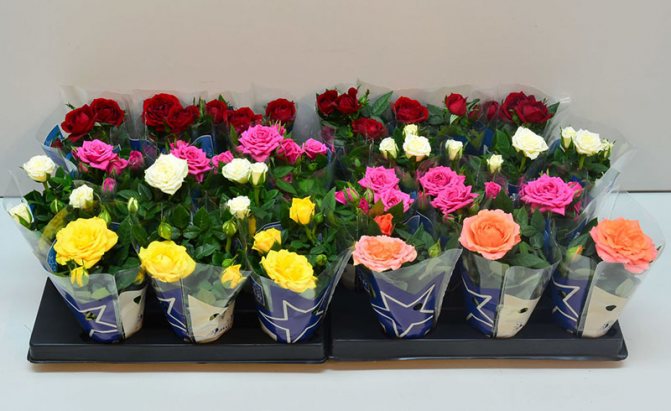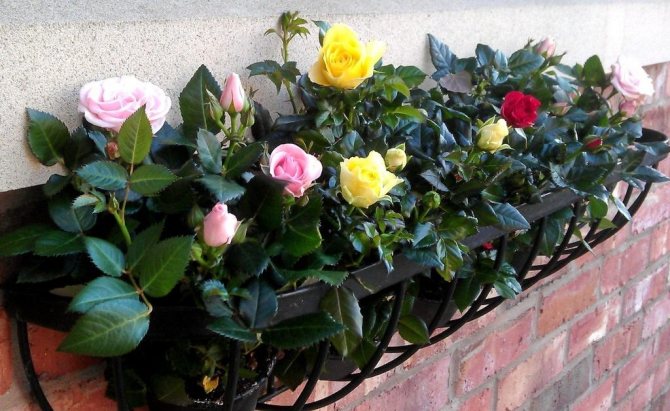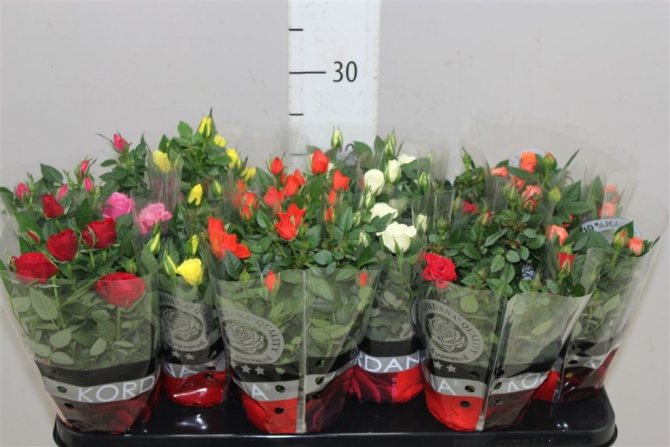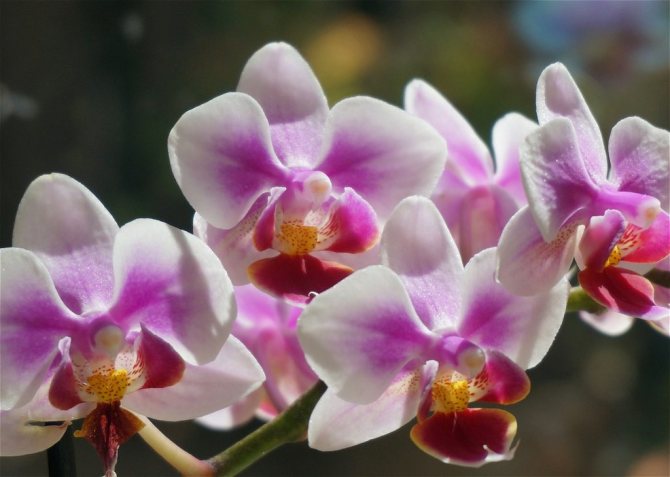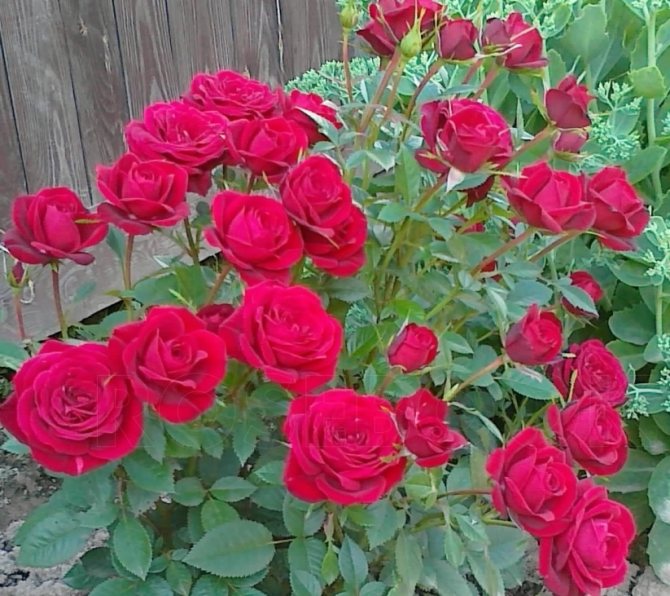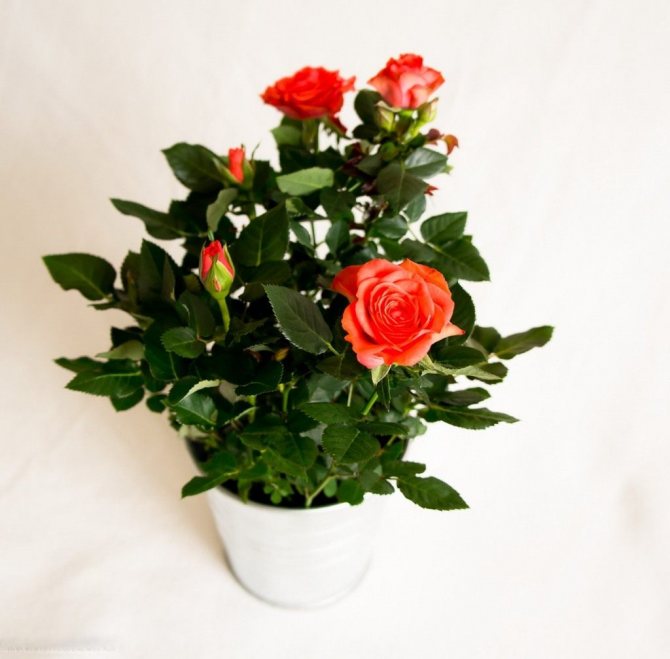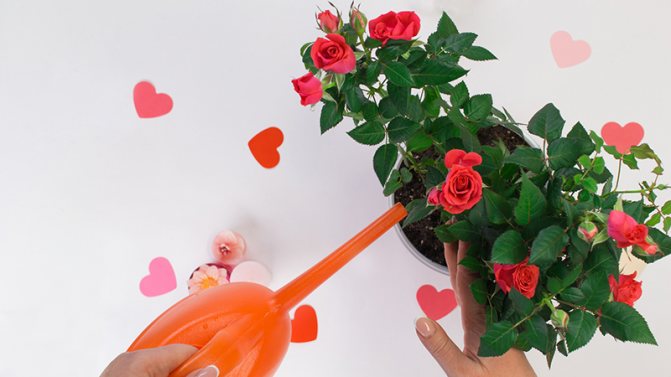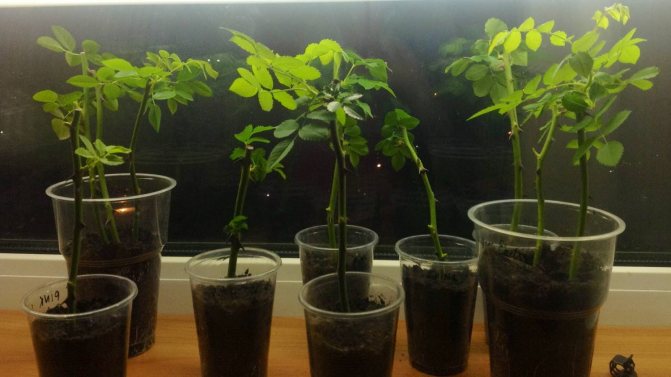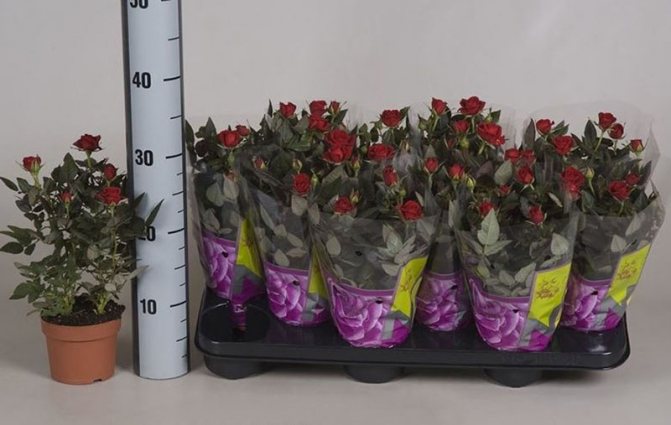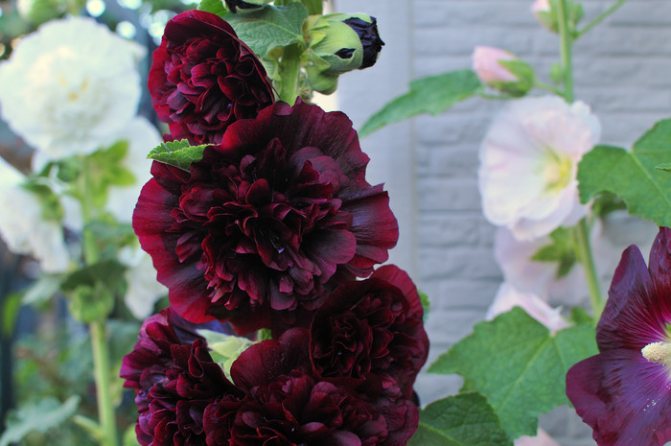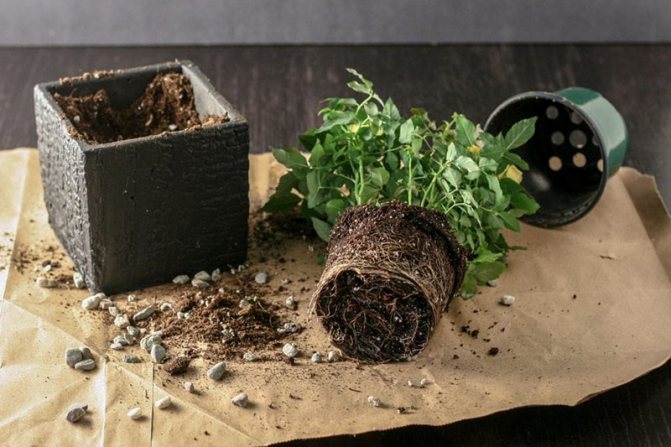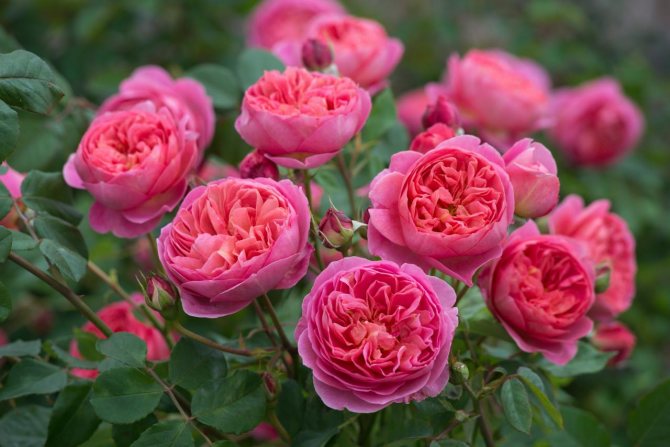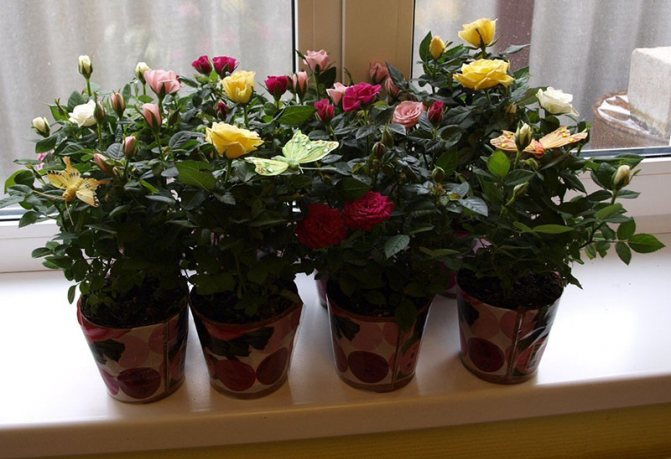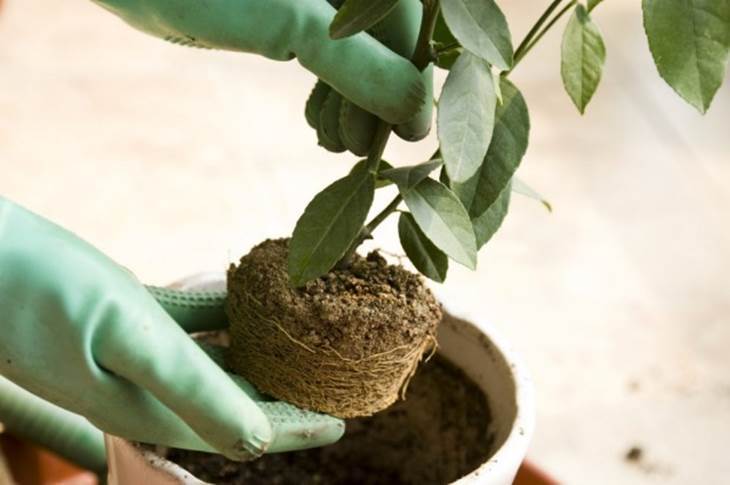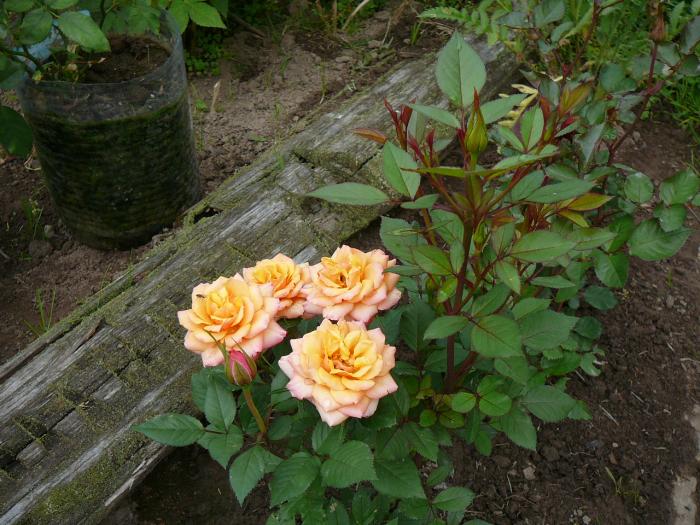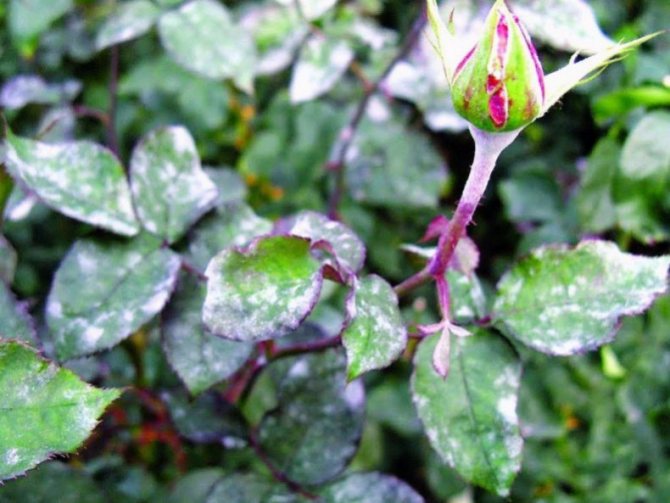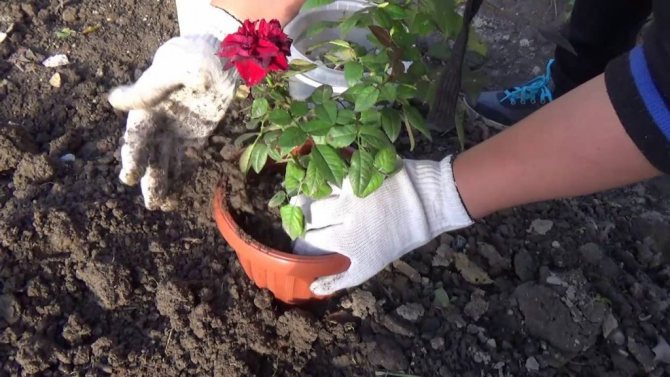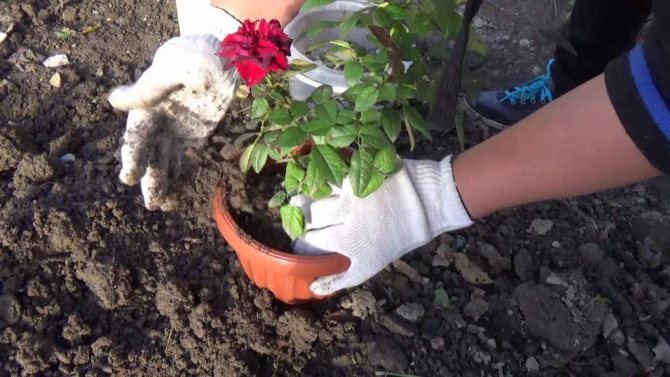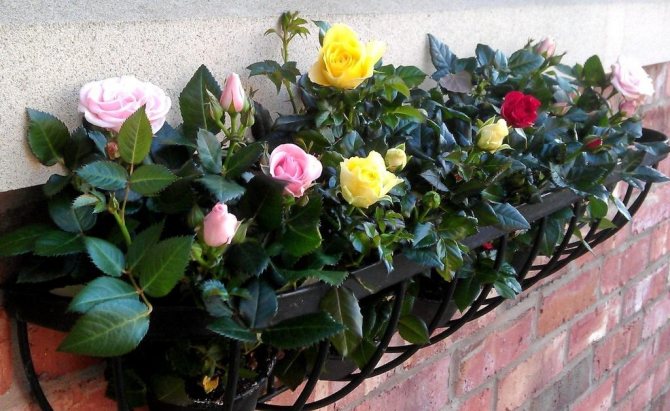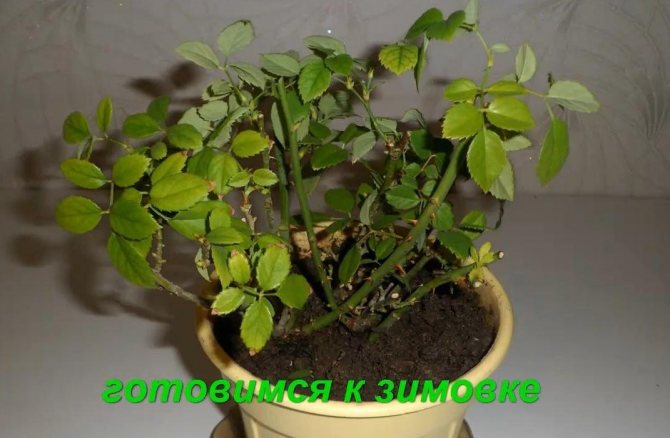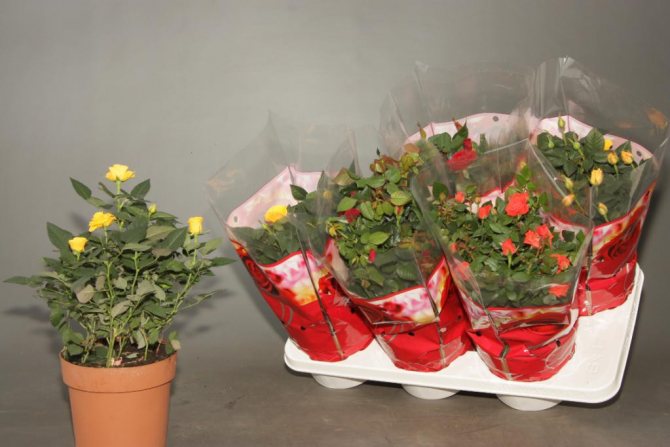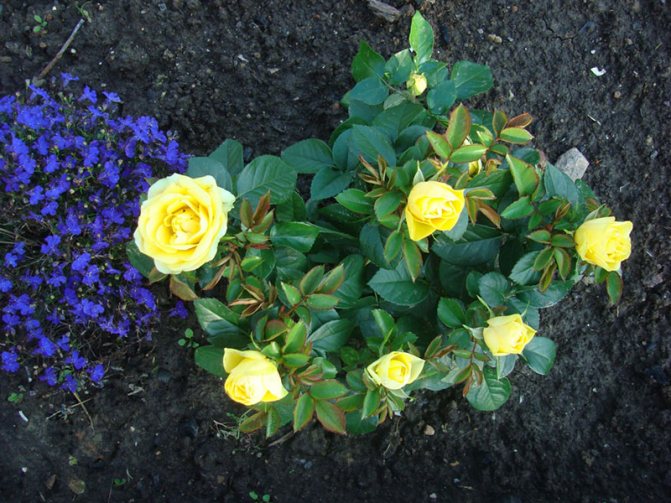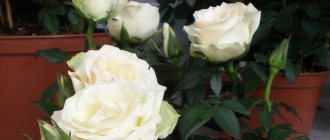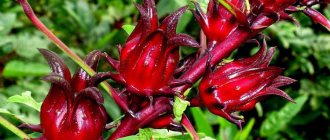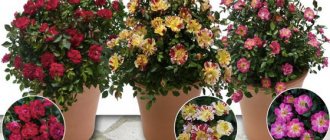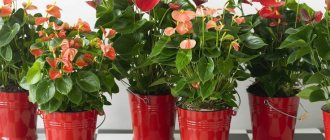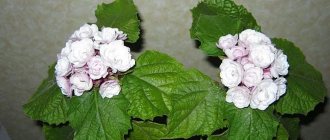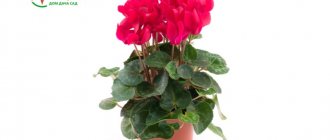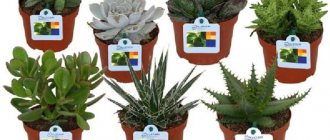Description of the variety
Rose Cordana is a beautiful miniature flower that is easy to grow at home. In addition, it is quite possible to grow it in your summer cottage and use it when growing a hedge. The plant is small - about 30 cm tall, the leaves are of a rich dark green color, almost emerald, the flowers themselves are classical in shape, and their colors can be different. Rose Cordana can delight you with both bright red and white, pink and yellow flowers.
The main feature of the variety is the complete absence of aroma. Yes, having this miniature rose on your balcony, you will not be able to enjoy the characteristic aroma that these flowers exude. However, there is an indisputable plus here - even allergy sufferers can grow this plant.
Diseases
Unfortunately, even the most beautiful roses are susceptible to a variety of diseases. The reasons may be a lack of daylight and root nutrition, excess fertilizer, or problems with moisture access. Due to the weakness that appears with improper care, roses begin to be disease resistant.
Mainly stems and leaves are affected, especially those confirmed by infection with fungal diseases. The rose often appears with already affected stems, which indicates the plant's vulnerability to disease.
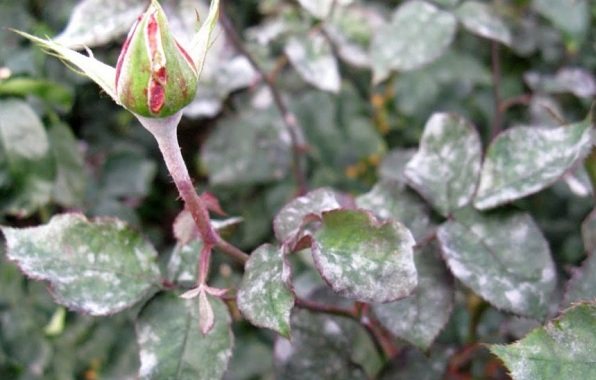
The main diseases that need to be borne in mind by the gardener include the following:
- Powdery mildew that attacks the plant before flowering. To avoid this disease, it is important to keep the air humidity below sixty percent, and keep the temperature within 18 degrees Celsius. It is easy to determine dew - a white bloom will form on the leaves, growing onto the stems and shoots. Sanitary pruning and changing the composition of the soil is considered an effective method of control.
- Black spot. It is especially active at the end of summer, black spots may appear on the leaves. If untreated, the entire leaf will begin to darken, which will simply dry out over time. To fight, you can collect and burn the affected shoots, spray the plant with a remedy.
- Rust. It is distinguished by the characteristic orange color of the spores that appear on leaves and shoots even in spring. If untreated, the plant will wilt, eventually stopping its development. To combat the disease, it is necessary to cut off the affected areas, destroy them and dig up the soil.
Thorough and long caring for Rose Cordana pays off in full, delighting the gardener with beautiful flowers and long flowering. If all the necessary conditions are met, the rose can be grown right in the house, since the flower feels great in a pot, or you can effectively decorate your garden.
Correct care
The purchased Cordana rose requires special treatment, therefore it is necessary to provide it with proper care. Immediately after the purchase, you may notice that the flower does not feel very good: being weakened, the rose may even shed its leaves. However, if you immediately begin to properly care for her, after a few weeks she will adapt to the new conditions and fully recover.
The first thing to do when purchasing this plant is to gently rinse your beauty under a warm shower and treat it with a special pest medicine. This will kill the parasites, if any.
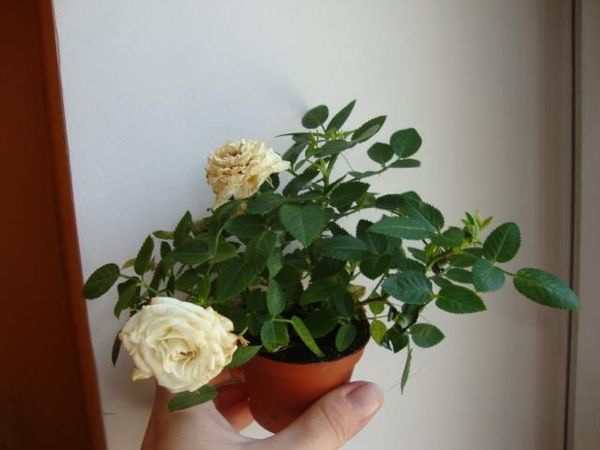

It is important to provide your beauty with the good lighting she needs. It is best to place it near the southern windows, but when the peak of solar activity comes, do not forget to put it in the shade, otherwise you will not avoid sunburn. The flower feels most comfortable at a temperature of 15-20 degrees. It is also important to ensure the supply of fresh air by ventilating the room on time. But do not put the rose in a draft - this can seriously harm it. In summer, the plant can be kept in a pot even on the balcony.
Rose Cordana loves moisture, so you need to water it often, making sure that the earth does not dry out. But it is also not recommended to flood the plant - the roots can rot. Excess water in the pan is also not needed - drain it if it remains. The best option is to water the rose as soon as the topsoil dries up. After watering, you need to loosen the soil a little so that the roots of the plant can access oxygen. Some recommend spraying the plant with a spray bottle, but many growers claim that this contributes to the appearance of fungal diseases.
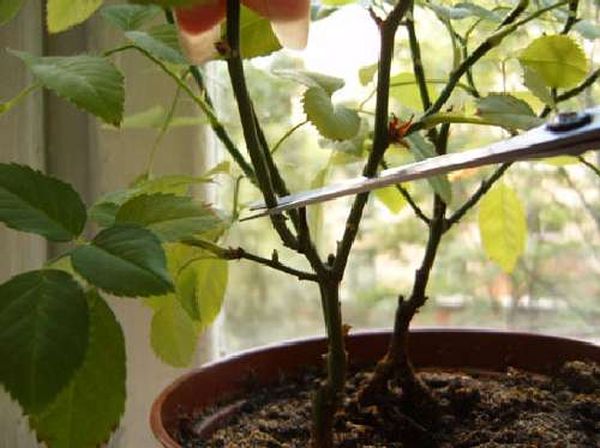

Top dressing is carried out in the spring (nitrogen-containing fertilizers) and in the summer (potassium-phosphorus fertilizers). In the fall, it is necessary to prune the bush to prepare the plant for winter. Some varieties of this flower must be cut off, otherwise it may not bloom next year.
Cordana Mix on a personal plot
Before planting a rose bush, you need to choose a place for it. Ideal is the south-east or south-west side of the site. Flower care should be as follows:
- Before planting, the soil is well moistened, a nutrient composition is added.
- After planting, the plant is carefully observed. They fertilize and loosen the earth in time.
- The roses are periodically sprayed with settled water at a comfortable temperature.
- Before wintering, all the buds are cut off. The remaining cuttings are used for further propagation. The bushes are covered with sawdust, wrapped in burlap or covered with materials intended for this.
Ranunculus: growing and care at home
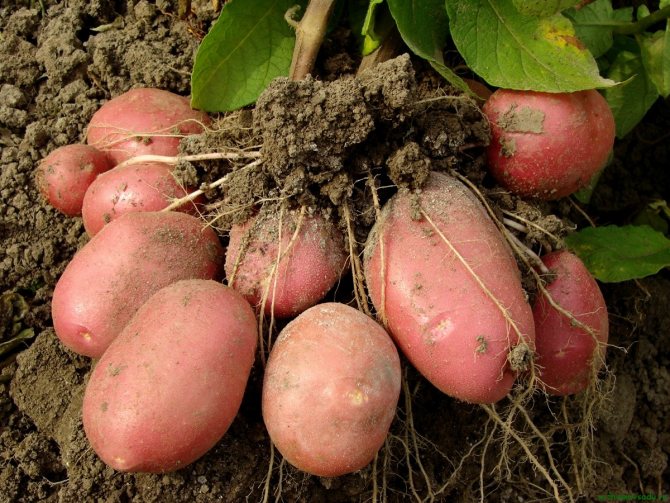

If you properly care for a rose, following all the recommendations, then even such a capricious plant can be tamed. And it will delight its owners for a long time with beautiful, abundant flowering.
Transplant and reproduction
The plant is transplanted immediately after purchase. In order to facilitate the procedure, it is recommended to slightly wet the flower in the pot. This is done in order not to destroy the earthen ball itself and not to damage the roots. Put drainage in a new pot on the bottom (use expanded clay for this) and make holes for water. Use a special mixture for roses, which can be purchased at flower shops, as a primer.
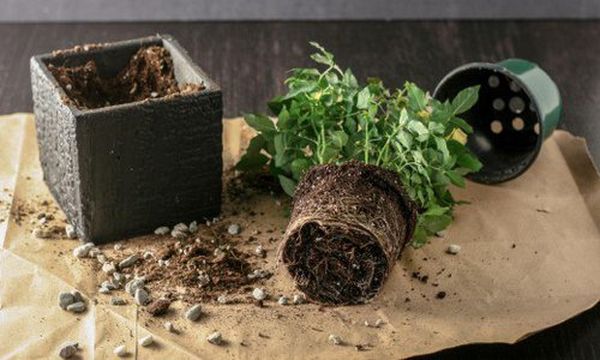

This rose is propagated by cuttings, which requires a shoot with several buds, 2-3 mm thick and without lower leaves. The bottom cut is made at an angle of 45 degrees and lowered into the water. After a couple of weeks, roots begin to appear at the shoot. After their appearance, feel free to transplant the rose into a new pot. After a while, shoots will appear, and after that - flowers.
History of origin
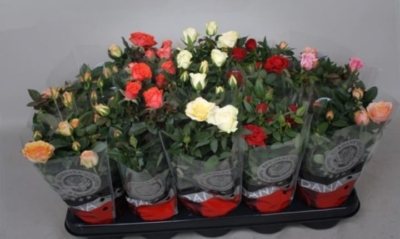

For the first time about the rose of Cordana conspiracies in the 19th century. In 1810, European countries brought dwarf tea roses from China. The flower growers really liked these varieties, they were especially impressed by their size.
A little later, breeders began to cross dwarf tea roses with other plant varieties of this genus. The name Cardana miniature roses were given in honor of the florist-breeder, who was engaged in breeding them by Wilhelm Cordes.
Further care outdoors
Rose Cordana in the open field feels great: it grows well, develops. Once it has reached the correct size in a pot, it can be transplanted into open soil in a garden area.
When to plant eggplants outdoors
The rules of care are very simple: timely watering and feeding in preparation for flowering. Pruning of bushes takes place in the autumn. This is required for good wintering. In the absence of these procedures, flowering may not occur.
Note! Fertilization of the soil should be first of all, before the planting of the flower itself occurs. Pour ash or manure into a hole prepared in advance, and only then plant a flower. Watering occurs only with warm water.
Weeding of the earth, cleaning of weeds, so that the soil can breathe, must be constantly carried out.
For the wintering period, it is recommended to make a reliable shelter for her, for example, transfer to a greenhouse.
Lighting
The capricious Cordana rose does not tolerate intense heat and direct sun, but the lack of sunlight also negatively affects it (flowering and active vegetation are interrupted). It is better to place the plant in a place where diffused light falls. In the garden, they choose a flower bed under tall trees, and in an apartment - southeast or western window sills. The lack of lighting in winter is compensated by using artificial light sources.


Temperature and humidity
The ideal temperature for growing a flower in the house is + 20 ° C. In winter, it is better to put the pot away from heating appliances, since it does not tolerate heat, and in summer it is placed on an open balcony or loggia. Periodically, the room is ventilated, since the plant loves fresh air, but it should not stand in a strong draft.
In the winter months, the bush rests and prepares for a new flowering. A temperature of no higher than + 10 ° C is suitable for him. If the air in the room is excessively dry, the rose will not bud. To create a comfortable environment for the plant, it is periodically sprayed and a humidifier is turned on. Experienced flower growers give their miniature roses a weekly warm shower in the spring.
Varieties
This compact rose has several varieties that can be grown at home or used to decorate flower beds.
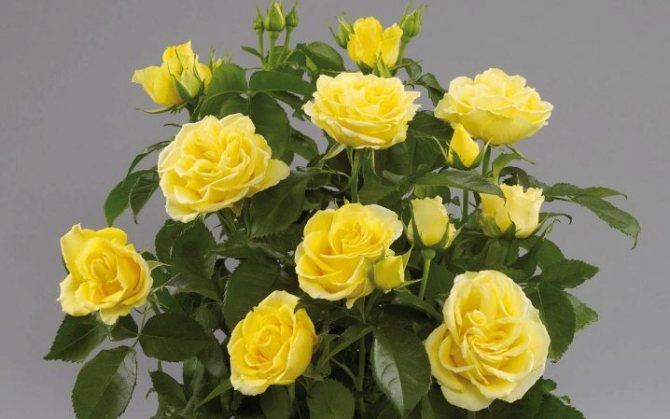

This is the most compact member of the species. It is grown only at home. The mix is considered the most capricious and needs favorable conditions. The name is associated with a variety of colors. Therefore, the culture is very popular with flower growers.
Luxury Denmark
This culture is characterized by compact bushes and purple inflorescences. The colors contain crimson tones.
Gigi
This culture is characterized by red and white flowers. With proper care, the plant is capable of reaching more than 30 centimeters in height.
Amore
The plant is suitable for planting in open ground. The culture is characterized by tall bushes that reach 40 centimeters.
Apollo
This species is characterized by pale yellow inflorescences. Their bloom can last up to 20 weeks.
Pasadena
This is a classic rose that is notable for its miniature size. This culture is characterized by high resistance to fungal infections.
Caliber
This culture is characterized by small red flowers 2-3 centimeters in size. Flowering continues until the coldest days.
Basic rose care at home
Location
The rose is used to growing in open areas with intense sunlight. Therefore, for its room maintenance, it is necessary to choose the sunniest windowsill with the maximum number of such hours. The western and eastern windows will be the best for the rose.
Watering
Constantly moist soil is a guarantee of long flowering and longevity of the rose. It is worth watering regularly after the superficial drying of the coma, never allowing the pot to dry out in a pan with water. Souring occurs when the pot is in a pan with water for a day or two and the soil "gets wet", like laundry in a basin before washing. The most reliable indicator that will help determine the degree of moisture is light finger pressure on the soil.If, with pressure, water appears under the finger, or the finger feels that the soil is clearly wet, watering can be skipped. If the finger remains dry, it's time to water. It is worth doing this every day to be sure that the soil is moist. Water the rose with settled water at room temperature or slightly warm. The most optimal watering method is from the top to the ground. And don't forget to remove excess drained water from the sump.
Constantly moist soil is a guarantee of long flowering and longevity of the rose
Food
Rose is a real "glutton"! In indoor conditions, it is better to "feed" the rose with universal, complex or organic fertilizers for flowering plants. It is fed from March to October once every 7-10 days with a nutrient solution at the concentration specified in the instructions.
J. Tadeusz: “As for the dressing. Of the fertilizers, I prefer Bona Forte for roses, it contains all the necessary trace elements. It can be processed both on the leaf and watered at the root. "
Transfer
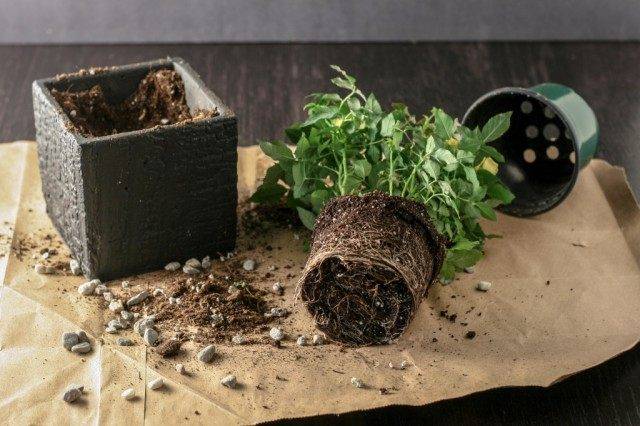

Rose transplant process
With regular fertilization in the summer, the soil does not have time to deplete, and it is only worth replanting if the soil has changed its physical properties, for example, it has become heavy or, conversely, looks like dust, or the plant has clearly grown out of the size of the pot. This should be carried out in February, before the rose awakens from winter rest. Expanded clay is placed at the bottom of the pot, or, if there are enough wide holes in the pot to drain excess water, you can do without it. It is also worth planting roses growing several pieces in one pot. Each rose should have its own individual pot, then it develops evenly and fully.
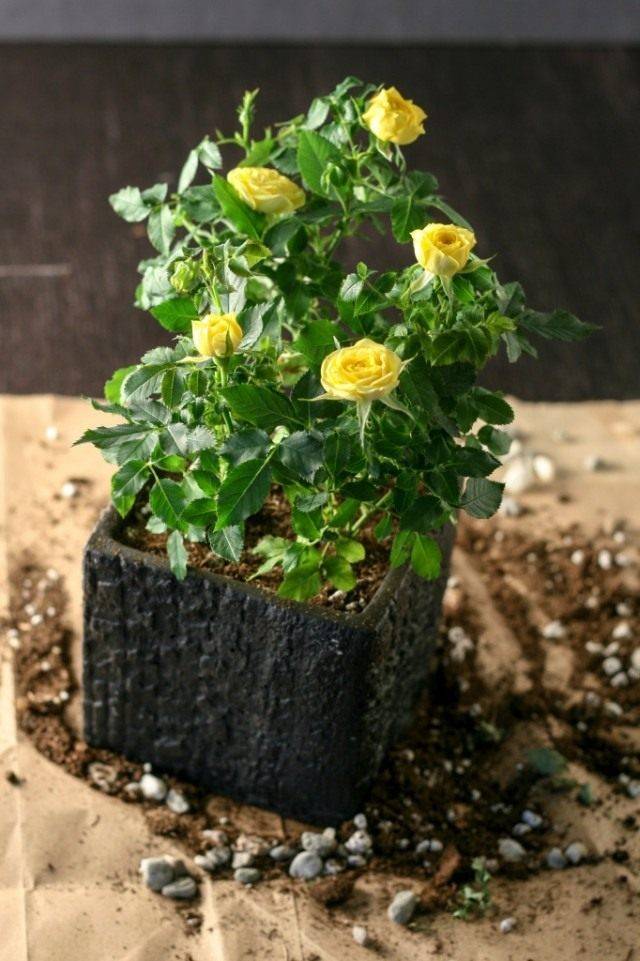

Rose in a new pot
The soil
Any all-purpose soil or rose special will do. When compiling the substrate, we independently take 2 parts of sod, 1 part of leaf or humus, 1 part of peat or coniferous litter and 0.5 part of sand.
Pruning
The rose is pruned before leaving for the winter. Cut out all frail, undeveloped shoots and those that grow inside the bush. The remaining branches should be shortened, leaving 2-4 lower buds - the more powerful the shoot, the less buds are left. And what should always be remembered when pruning is the value of young basal shoots. New shoots growing from the root are a sign of good health for your rose. Over time, they will replace old ones and take new roots. Indoor rose never gives "blank", fattening shoots, like a garden rose. Such shoots are cherished and cut for the winter for 3-4 buds.
Reproduction
The drug heteroauxin stimulates root formation and gives the best results when propagating roses by cuttings. It is better to cut the cuttings from May to August and choose from 2.5 to 3.5 mm thick with 2-3 internodes. Pour about 3 cm of water into a transparent glass, dissolve part of the heteroauxin tablet in it (the proportion is indicated on the label) and place the prepared cuttings in it. Such cuttings, as a rule, take root within 2-3 weeks, the main thing is not to change the water at this time, just make up for the evaporated losses. When the roots grow to a length of 1.5-2 cm, the cuttings can be planted in small pots and protected from sunlight for a couple of days. The cuttings that have taken root immediately start growing and, if it is spring time, bloom in the second month after rooting.
Rose taboo
Every now and then I read in different sources that the rose is very fond of spraying and high humidity. Practice shows that these sprays only stimulate the development of various fungal diseases that "eat" the rose in a couple of days. The rose grows well in the standard humidity of any room.


Rose grower-collector Julia Tadeusz
Subsort of indoor plant in a pot
There are several sub-varieties among the Cordana roses. The most popular ones are described below.
The most popular is Mini Caliber... It forms small flowers up to 3 cm in diameter.The petals are painted bright orange-red. Blooms profusely until frost.
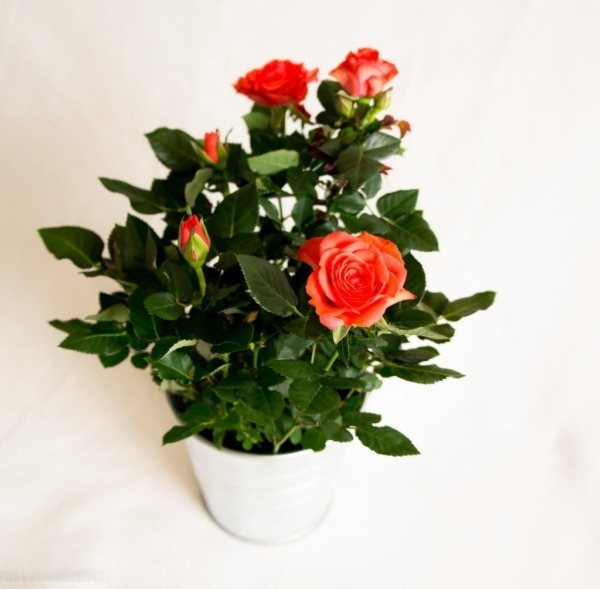

The Cordana Mix variety is considered the most famous and demanded. Plants form a large number of flowers. It is resistant to bad weather, but does not like excess light and water. Flowering lasts about six months.
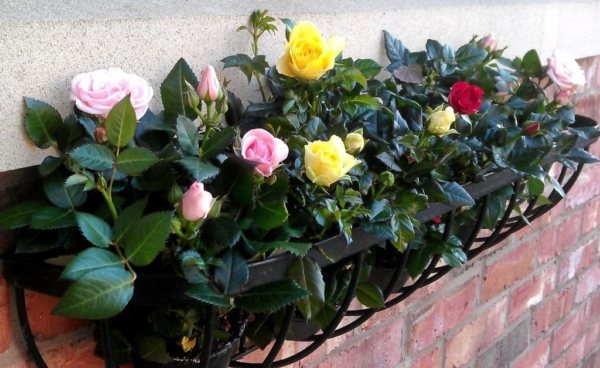

You can find out more about the varieties of the lovely mix rose and the peculiarities of its cultivation here.
The best
The best varieties of flowers include:
- Pearl... It is characterized by creamy white flowers. The flowers are goblet.
- Ballet... It is named so due to the fact that the fully open flower is very similar to a ballet tutu in a rich bright pink color.
- Magnolia... Forms single creamy pink flowers. The outer petals are pale green.
- Pasadena... It is considered a classic rose variety, but in miniature. It blooms with red flowers, forms a large number of petals, and is resistant to diseases.
Winter hardy
Despite the fact that the Cordana rose very badly tolerates low temperatures, there are varieties that have good winter hardiness:
- Impala... It blooms with delicate apricot flowers, resistant to both bad weather and a variety of diseases.
- Kiss... Forms flowers singly, blooms cherry-red.
Flower content indoors
After transplanting, you need to organize the plant optimal conditions for further development.
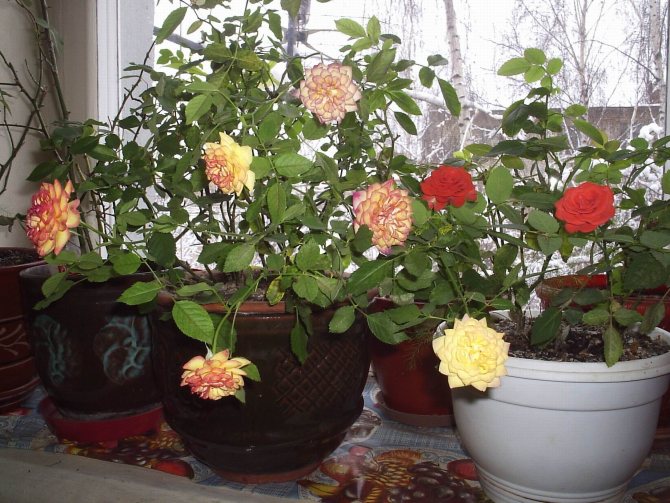

Basic rules of care:
- Lighting. Rose Cordana belongs to the light-loving type. The most suitable place is the south-east and south-west side. It is important to protect the flower from direct sunlight to avoid burns. In the winter season, the rose needs additional lighting.
- Temperature conditions. Comfortable conditions should be created for the plant, the temperature in the house should vary from 15 to 20 degrees Celsius.
- Regular airing of the room. The air in the room should not stagnate. It is necessary to ventilate the room once a day, but make sure that there are no drafts. In warmer months, the rose can be taken out onto the balcony or veranda.
- Watering. It is carried out only in case of complete drying of the soil, several times a week. It is best to water the rose early in the morning or in the evening. Cold water cannot be used, this can cause the development of a disease such as powdery mildew. The excess water accumulated under the pot is drained. The flower loves spraying. Do not flood the rose and do not allow the soil to dry out too much to prevent rotting of the root system and wilting of the flower.
- Plant feeding. Rose Cordana mix, will delight with abundant flowering, if properly fertilized. Home care includes the right approach to manipulation. In the spring, you need to feed with nitrogen-containing preparations, in the summer you need to add phosphorus-potassium supplements. It is recommended to apply fertilizers no more than 3-4 times per season. Twice a year, you can feed the rose with saltpeter and superphosphate. After the store, you should not add additives to the soil.
- Pruning. Florists recommend making a mandatory rose pruning at the beginning of each fall. Together with adult shoots, young twigs are also removed. You also need to get rid of damaged, dry and crooked shoots.
- Rest period. In a rose mix, it comes in winter. At this time, it stops blooming, some of the leaves fall off. The pot with the plant must be taken out to a cool place, and at the beginning of February it should be returned to its place.
